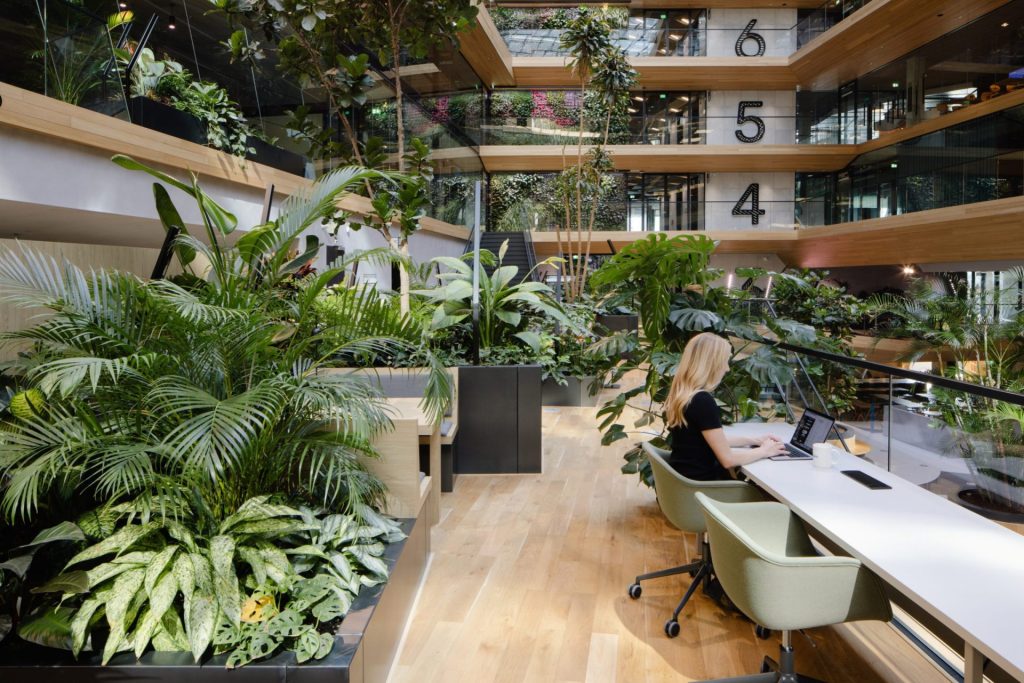Transforming Spaces: The Influence of Conscious Consumption on Home Organization

Understanding the Shift in Home Organization
As society becomes increasingly aware of our consumption patterns and their impact on the environment, a movement centered around conscious consumption has emerged. This transformation is not merely a trend but a profound shift that affects how individuals curate their living spaces.
Minimalism in Home Design
Minimalism has gained traction as a lifestyle choice that emphasizes decluttering and simplicity. By embracing minimalism, individuals learn to appreciate the value of fewer possessions, creating more serene and inviting environments. For example, rather than filling a room with various decorations, a minimalist approach might focus on a single piece of art that resonates with the homeowner’s identity. This not only enhances the aesthetic appeal but also encourages self-reflection and mindfulness.
The Role of Sustainability
The concept of sustainability has become integral to many people’s lives as they seek to align their home organization with eco-friendly practices. Consumers are increasingly inclined to choose products that are made from sustainable materials, support ethical production, or have minimal environmental impact. For instance, opting for bamboo kitchen items instead of plastic alternatives can significantly reduce an individual’s carbon footprint while maintaining functionality. Furthermore, purchasing second-hand furniture or decor not only supports local businesses and reduces waste but also adds character and history to a space.
Emphasizing Functionality
Another key aspect of conscious consumption is functionality. In a world where every item can contribute to clutter or stress, individuals are prioritizing pieces that serve a clear purpose and positively enhance their daily lives. Multifunctional furniture, like sofa beds or storage ottomans, exemplifies this trend. Such selections not only maximize space but also foster a streamlined living environment that promotes efficiency in everyday routines.
The Psychological Impact of Organized Spaces
Research increasingly suggests that well-organized spaces can lead to improved mental health. A tidy environment can enhance focus, reduce stress, and promote a sense of calm. As individuals commit to decluttering and selecting items thoughtfully, they often experience a significant boost in their emotional well-being. The practice of regularly assessing one’s belongings and letting go of items that no longer serve a purpose creates an uplifting atmosphere that resonates positivity.

This exploration of conscious consumption and its impact on home organization raises critical questions about identity and values. As you reflect on your living space, consider whether it genuinely represents your priorities and beliefs.
In an era where personal well-being and environmental consciousness go hand in hand, the journey toward transforming your home through mindful choices and effective organization strategies is more crucial than ever. Embrace this opportunity to create a living environment that not only reflects who you are but also contributes to a sustainable future.
DISCOVER MORE: Click here to learn about mindful shopping practices
Embracing Conscious Consumption in Everyday Life
The rise of conscious consumption has profoundly reshaped how we view home organization. This movement, which prioritizes mindful purchasing and usage of products, encourages individuals to invest in items that serve a practical purpose and are produced sustainably. In the world of home organization, this translates to not just how spaces are arranged, but also the very items that fill them.
Choosing Quality Over Quantity
One of the primary tenets of conscious consumption is the shift from acquiring quantity to valuing quality. Instead of filling a living space with numerous items that may lack longevity or significance, consumers are turning towards durable, high-quality products. This approach not only reduces waste but also cultivates a sense of pride in one’s belongings. Homeowners are now more likely to invest in:
- Artisan-made furniture: Pieces that are handcrafted often carry a story and are built to last, avoiding the pitfalls of mass-produced alternatives.
- Locally sourced decor: Purchasing items from local artisans not only supports community businesses but often results in unique finds that can enhance the character of a home.
- Eco-friendly textiles: Choosing materials such as organic cotton or hemp can reduce harmful chemical exposure while promoting a healthier living environment.
The Shift Towards Intentional Spaces
As people embrace conscious consumption, there is a noticeable shift towards creating intentional spaces within their homes. This concept entails thoughtfully selecting items that not only fulfill a specific need but also align with personal values. For example, a minimalist approach might lead someone to choose a workspace that includes only essential tools, which can enhance productivity and reduce distractions. This philosophy extends to every corner of the home:
- Living Rooms: Instead of cluttered entertainment centers, intentional living spaces feature curated book collections and comfortable seating that promotes relaxation.
- Kitchens: Conscious consumers prioritize multifunctional kitchen gadgets that minimize counter clutter while maximizing meal preparation efficiency.
- Bedrooms: Selecting calming colors and natural materials fosters a sanctuary for rest, contrasting sharply with overcrowding and chaos.
Fostering Community and Connection
Beyond individual choices, conscious consumption fosters a sense of community and interconnectedness. Consumers are increasingly recognizing the value of sharing resources, whether through community swaps, local thrift stores, or online platforms dedicated to secondhand goods. This not only promotes sustainability by reducing the need for new production but also enhances connections with others who share similar values.
In this evolving landscape of home organization, understanding the implications of conscious consumption is crucial. As individuals begin to redefine their living spaces through mindful choices, the impact extends far beyond aesthetics; it becomes a lifestyle change that aligns with broader ecological and social concerns.
| Advantages | Details |
|---|---|
| Sustainability Focus | Promotes eco-friendly choices that reduce waste and minimize carbon footprints. |
| Enhanced Well-Being | Conscious consumption leads to organized, clutter-free spaces that enhance mental clarity and comfort. |
| Financial Awareness | Encourages budgeting and wise purchasing decisions, which can lead to long-term savings. |
| Community Engagement | Fosters connections through local sourcing and shared resources, benefitting the broader community. |
In the journey of transforming spaces through conscious consumption, individuals discover how their choices impact both home organization and overall lifestyle. Sustainable practices not only reduce waste but also promote harmony within living environments. The emphasis on eco-friendly products encourages homeowners to mindfully assess their possessions, leading to a balanced and tranquil space.Moreover, the financial awareness aspect of conscious consumption allows for better spending habits, as individuals prioritize quality over quantity. This mindful approach often results in long-term savings that go hand in hand with smarter consumption.Additionally, community engagement emerges as a pivotal benefit, connecting individuals through various initiatives like local marketplaces and recycling programs. This interaction not only supports local economies but cultivates a shared sense of responsibility toward sustainable living.By understanding the profound influence of conscious choices on home organization, readers are encouraged to delve deeper into the evolving narrative of transforming living spaces.
DIVE DEEPER: Click here to learn more about mindful shopping habits
Transforming Home Organization Through Sustainability
The impact of conscious consumption on home organization extends well beyond aesthetics; it contributes significantly to sustainability efforts. As consumers become more aware of their environmental footprint, sustainable practices are reshaping how spaces are organized and maintained. The trend of embracing sustainably sourced materials and responsible production channels is translating into meaningful changes in the layout and functionality of homes across the United States.
Eco-Conscious Organizational Solutions
In response to the growing desire for sustainability, innovative organizational solutions are emerging. Homeowners are increasingly utilizing products that not only organize their spaces but also promote environmental friendliness. Some of the key strategies include:
- Biodegradable storage options: Containers made from environmentally friendly materials are gaining popularity. Unlike traditional plastic bins, these products break down naturally and do not contribute to landfill waste.
- Reclaimed wood furniture: Homeowners are incorporating pieces made from reclaimed materials into their decor, combining aesthetic appeal with sustainability. This practice not only minimizes deforestation but also preserves historical significance within the home.
- Energy-efficient lighting: As living spaces are organized to reflect conscious consumption, the choice of lighting is also crucial. LED lights and natural light-enhancing solutions contribute to lower energy consumption and can drastically alter the ambiance of a room while supporting eco-friendly practices.
The Rise of Multi-Functional Design
An imperative aspect of conscious consumption is the demand for multi-functional design. Homes are evolving into dynamic spaces where each item has a purpose. The popularity of multi-use furniture and installations speaks volumes about a shift in how we organize our environments. For instance:
- Convertible furniture: Sofas that transform into beds, tables with integrated storage compartments, and ottomans that double as seating or footrests are increasingly common. This ensures that every piece serves multiple functions without excess clutter.
- Vertical solutions: Utilizing vertical space allows for effective organization in homes, especially in urban areas where square footage can be limited. Wall-mounted shelves and hanging organizers help keep floors clear while maximizing available space.
- Smart technology: As technology continues to advance, smart home devices contribute to organization by offering automated solutions. Voice-activated systems can control lighting, appliances, and even storage units, promoting a seamless living experience.
Mindfulness in Decluttering Practices
In the vein of conscious consumption, the principles of mindfulness are making their way into the decluttering process. This shift emphasizes the importance of only keeping items that add value or bring joy. Techniques inspired by minimalism encourage homeowners to assess their possessions critically:
- The “one in, one out” rule: This guideline maintains balance by ensuring that for every new item brought into the home, one existing item is removed, promoting a healthier relationship with belongings.
- Seasonal evaluations: Face challenges in decluttering by routinely assessing items based on seasonal needs—such as winter clothing or holiday decorations—ensures that spaces remain functional and relevant.
- Emotional connections: Understanding the emotional ties to belongings allows individuals to make informed decisions about what to keep. This practice not only honors personal history but facilitates a more intentional space.
As this paradigm of home organization unfolds through conscious consumption, it serves as a reminder that our living environments can positively reflect our values and aspirations. The evolution signals a shift towards not just a more sustainable lifestyle, but a deeper appreciation for the spaces we inhabit.
DISCOVER MORE: Click here to learn about mindful shopping habits
Conclusion: A New Era of Conscious Living
The movement towards conscious consumption is revolutionizing the way we organize and experience our living spaces. As we embrace sustainable practices, the home becomes not just a physical shelter, but a reflection of our values and commitment to the environment. With eco-friendly solutions like biodegradable storage options, reclaimed wood furniture, and energy-efficient lighting, homeowners are discovering that organization can harmonize aesthetics with sustainability.
The rise of multi-functional design represents a shift towards greater efficiency and versatility in our homes. In an age where space is a precious commodity, design innovations such as convertible furniture and vertical storage solutions allow us to maximize our environments without generating clutter. Supported by advances in smart technology, these elements facilitate a seamless, organized living experience that meets the demands of modern life.
Furthermore, the incorporation of mindful decluttering practices emphasizes the significance of intentional living. By adopting principles like the “one in, one out” rule and engaging in seasonal evaluations, individuals can cultivate spaces filled with items that resonate personally and enhance overall well-being. This approach encourages us to reflect on our emotional connections to our belongings, leading to a more defined sense of purpose in our homes.
In conclusion, the influence of conscious consumption on home organization is profound and far-reaching. It not only drives the evolution of our living spaces but also fosters a culture of sustainability and mindfulness that is essential for a healthier planet. By transforming our homes with intention and care, we embrace a lifestyle that beautifully intertwines our aspirations for both ecological responsibility and personal fulfillment.


